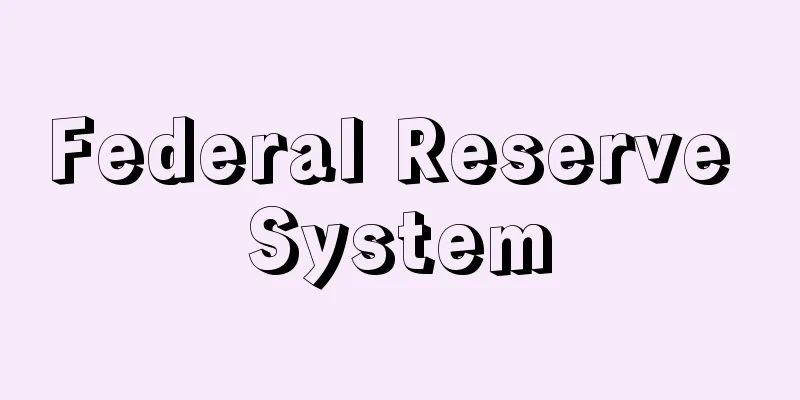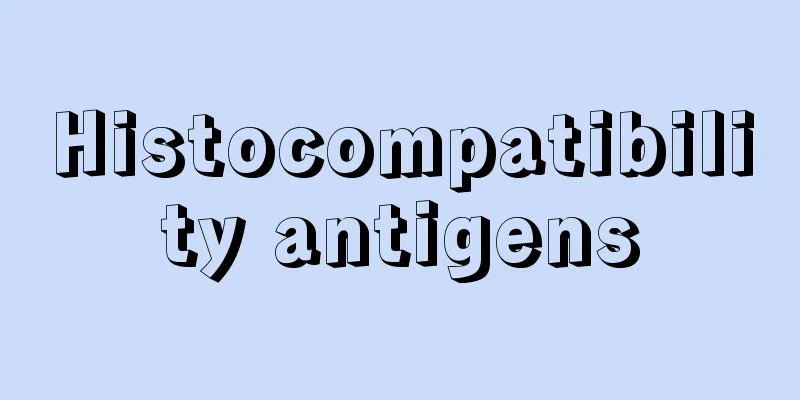Emperor System - Tennousei

|
In the narrow sense, the term "imperial system" refers to the state system in which the Emperor is the monarch or the source of authority for political rule, and in the broad sense, it is used to include the social structure and ruling ideology that support such a state system. [Hiroshi Yasuda] The Trend of Emperor System ResearchThe term "Tennosei"The term "emperor system" was originally created to refer to the monarchical system of modern nations after the Meiji Restoration and the ideology that justified it. The state power established by the Meiji Restoration based the legitimacy of its political rule on the rule of the Emperor of "unbroken line of emperors" derived from the mythology of the Kojiki and Nihon Shoki, and considered this to be Japan's "kokutai," or unchanging national character. It adopted a political system in which all governing power was vested in the Emperor, and an autocratic system in which the civil and military bureaucratic institutions exerted great power under him. As a criticism of this autocratic system and the ideology of justifying rule that mobilized mythological history, the monarchical system was called the Emperor System, and the Japanese Communist Party and Marxist scholars who published "Lectures on the History of the Development of Japanese Capitalism" analyzed it as having an absolutist character. In other words, the term "imperial system" was established as a term to indicate a critical recognition that while the modern imperial state performed the socio-economic function of maintaining bourgeois ownership and semi-feudal landlord ownership, its mode of political rule was absolutist and pre-modern, corresponding to the precursor to the Western European civil revolutions. However, under the national system before the Second World War, which sought the legitimacy of political rule in the reign of the Emperor, critical and scientific knowledge of the monarchy was subject to suppression, and the use of the term "emperor system" was prohibited. In fact, doubts about the existence of Emperor Jimmu and the historical accuracy of the descriptions in the Kojiki and Nihonshoki had been raised academically as early as the Meiji period. Such empirical historical research was often suppressed, as in the Kume Kunitake incident in 1892 (Meiji 25) and the Tsuda Sokichi incident in 1940 (Showa 15), and freedom of scientific research on the Japanese monarchy was not established before the Second World War. After the defeat, the modern imperial state collapsed, and research on the Japanese monarchy and the Emperor was for the first time freely conducted throughout the entire era. During this time, papers entitled "research on the emperor system" were published one after another, and the term "emperor system" became a common academic term. [Hiroshi Yasuda] Emperor System in Premodern HistoryThe term "emperor system" has also been applied to premodern history, and research on the ancient and medieval imperial systems has been accumulated, and since the 1970s, research on the early modern imperial system (imperial court) has also progressed. First, in ancient history, as a criticism of the theory of an unbroken imperial line before World War II, the change of dynasty in the Yamato government established in the early 4th century has been examined, and it is widely agreed that the pre-Taika era Okimi family did not continue as it was and develop into the emperor of the Ritsuryo state. Regarding the ancient imperial system established as a Ritsuryo state, the relationship between its character as an Asian despotism and its Japanese characteristics has been mainly examined. In medieval history, the imperial system established as an ancient despotism has been examined, focusing on the issue of the samurai government (bakufu) formed by the local feudal lords - the samurai class - and the aristocratic government (imperial court) in Kyoto. In early modern history, the reasons why unified governments that overcame the warring lords and gained power through their own strength, such as the Oda Nobunaga government, Toyotomi Hideyoshi government, and Tokugawa Ieyasu's Edo Shogunate, allowed the Imperial Court to continue, and why the authority of the Imperial Court emerged at the end of the Edo period, have been examined. Through these studies, it has become clear that the political power and social role of the Emperor and the system that supported him changed greatly over time. Thus, since the mid-1980s, premodern history research has often used the term "royalty" rather than the term "emperor system" in its analysis. This is based on the reasons that the Emperor and the Imperial System are considered to be components of Japanese-style monarchy in comparison with other monarchies, in order to avoid the misunderstanding that the exact same system, the Emperor System, has continued, to clarify the magical and religious nature of premodern monarchs, and to analyze the structures and systems that make monarchs monarchs. [Hiroshi Yasuda] Research on the Modern Emperor SystemAfter the Second World War, research into the modern Emperor System began with empirical examination of the modern state system, based on the absolutist Emperor System theory of the Koza school. On the other hand, political scientists such as Maruyama Masao analyzed ideological structures such as the "family-state view," and new analyses of the political and social functions of the Emperor System, such as how the state grasped the social base of the household and village. Based on these analyses, research also progressed that attempted to understand how the Emperor System captured the thinking and behavior of the people in accordance with their consciousness. In these studies, the mainstream tendency was to emphasize the uniqueness and backwardness of the modern Emperor System. Also, because the focus was on the overall structure, analysis of the actual role and function of the Emperor as an individual was delayed. In response to this, new trends in research have emerged since the second half of the 1980s, especially around the time of the death of Emperor Showa. The first is the tendency to emphasize the elements of the modern Emperor System that were newly created in the process of modernization. While focusing on the image of the Emperor and the method of cultural integration through the Imperial system, emphasis has been placed on the fact that it was constructed as a device of modernization rather than on its "traditional" elements, and on its compatibility with the devices of the modern Western state. The second tendency is to analyze the interrelationships between the political forces surrounding the actual Emperor, and to concretely clarify the political function of the Emperor as an individual. This approach deepens the analysis to the concrete level of the operation of the system, and by grasping the position and function of the Emperor within the actual national decision-making process, a new analysis of the Imperial state is undertaken. [Hiroshi Yasuda] The premodern Emperor systemEstablishment of the title of EmperorThe title "Tenno" was once thought to have been established during the reign of Suiko in the first half of the 7th century, but the current view is that the title first came into use toward the end of the reign of Tenmu, and was established in the Asuka Kiyomihara Code (689). In other words, it is believed that the word "Tenno" was established as the title of a monarch in a Ritsuryo state. Prior to the establishment of the title "Tenno," the title of Wa-o was given by the Chinese dynasty to monarchs from Himiko, queen of Yamataikoku, to the Five Kings of Wa in the 5th century, and furthermore, during the time of King Buo, the last of the Five Kings, the title of "Okimi" (Great King) was used as a monarch's title. [Hiroshi Yasuda] Establishment of the Yamato governmentAround the 3rd century, the primitive community began to break down, and its chiefs, as priests of the primitive religion, elevated themselves to a transcendental existence close to God, and came to reign as military and political rulers. In this transition from primitive kingship to ancient kingship, governments were formed in various regions with influential chiefs as kings (kimi). Among these, the government chief of what would become Kinai, called himself Okimi (great king) as the leader of a coalition of local chieftaincy governments, and formed the Yamato government. Until the first half of the 7th century, the Yamato government's rule was based on the organization of the various powerful clans that had previously been the heads of local governments under the Kuni no Miyatsuko system and clan and surname system, but local rule, except for direct territories such as Miyake, relied on the traditional rule of the powerful clans over the people. However, in the 6th and 7th centuries, smaller clans began to rise under the local ruling families, making it difficult for the larger clans to continue their traditional bemin system of rule. This led to rebellions among local clans, and the Yamato government's bemin system and clan-based clan rule came to a standstill. Also during this period, the unification of China by the Sui and Tang dynasties and their invasions, and the rise of Silla in Korea led to successive wars on the Korean peninsula. Under these military tensions, the Yamato government introduced the Ritsuryo Code in the 7th century, aiming to fully establish a national system that would centralize power and strengthen control over the people. [Hiroshi Yasuda] The Ritsuryo State and MonarchyIn the Ritsuryo state that was established in the early 8th century, the Emperor was positioned as a Chinese-style emperor with supreme power in diplomacy and the military, the power to bestow titles, the power to regulate the government, and the power to appoint and punish government officials. However, the position of the Emperor was determined by the will of the Imperial Ancestors, and was hereditary exclusively to a specific family, which is quite different from the Chinese idea of a virtuous person becoming a monarch by divine command. The Emperor also had the status of a priest who worshiped the Imperial Ancestors and other Japanese deities of heaven and earth, and the Ritsuryo Code established the Jingikan as an organization for the magical and ritualistic control of the Emperor. On the other hand, the Daijokan was established as the political organization of the Emperor as the secular monarchical power. In reality, the Emperor's exercise of governing power was determined by the will of the Crown Prince and other Imperial family members, the Retired Emperor (Daijo Tenno) (Retired Emperor), and the aristocrats who occupied the upper echelons of the Dajokan (Grand Council of State), so the Emperor did not always rule as a personal dictatorship, but from the perspective of rule with the Emperor at its core, the ancient Imperial system can be characterized as a monarchical autocracy. With the transformation of the Ritsuryo system and the expansion of real power in the Imperial Court by the Fujiwara clan, from the end of the 9th century, regents and chancellors of Fujiwara clan origin came to hold real political power. However, the authority of the regents and chancellors originated from the sovereignty of the Emperor, and the condition for the regent system to function was a marriage relationship with the Emperor. [Hiroshi Yasuda] The Establishment of the Dual System of Imperial Rule and Military RuleBetween the 10th and 12th centuries, the public land and public citizen system was dissolved as county governors and the wealthy expanded their private land development. The ruling classes at the central and local levels sought hereditary control of their lands as territorial lords, and a national structure known as the shoen-koryo system was formed. Politically, when the retired Emperor Shirakawa began his cloistered government at the end of the 11th century, governing power was almost entirely transferred to the retired emperor, who came to be regarded as the "chiten no kimi". The basis for this change was the situation in which the imperial family and regent families became shoen lords and privately held powerful clans with the formation of the shoen-koryo system. In this way, the Ritsuryo state changed, and the Imperial Court = aristocratic government from the end of the 11th century to the 14th century saw the Incho, an organ directly under the retired emperor, become the main organ exercising real power. Minamoto no Yoritomo, the leader of the samurai clan, who had the character of local feudal lords, destroyed the Taira clan at the end of the 12th century and became the chief pursuer and land steward of Japan, thereby seizing control of military and police powers throughout the country. The shogunate that Yoritomo established not only realized a system of power between the shogun and the samurai clan based on a lord-vassal relationship, but also seized a significant portion of the Emperor's governing power, leading to the establishment of a military government in Kamakura that existed in parallel with the court noble government in Kyoto, creating a dual system of government between the court and the military, with governing power divided. [Hiroshi Yasuda] Unification of rule by the samuraiEmperor Go-Daigo's Kenmu Restoration was an attempt to break this situation and fully restore the sovereignty of the Emperor, but the defection of Ashikaga Takauji caused the new government to collapse in a short time. When Takauji established the shogunate, Go-Daigo fled to Yoshino and established the Southern Court, which led to the "splitting of the imperial line" and the start of the civil war between the Northern and Southern Courts. By the end of the 14th century, when the civil war was coming to an end, Ashikaga Yoshimitsu, the third shogun of the Muromachi shogunate, was given the title of Grand Minister of State and then Cloistered Emperor, and he had also brought temples, shrines, and court nobles under his control. In diplomatic relations with the Ming Dynasty, he sent a sovereign letter calling himself the "King of Japan," and was internationally recognized as the de facto monarch of Japan. Although the imperial court system still existed, Yoshimitsu had achieved a considerable degree of unification of the imperial and military forces from the military side. The control of local lords expanded significantly by developing and establishing the jito position organized by the Kamakura Shogunate, and unified territorial control was spread within the multi-layered system of positions. Thus, the manor and public land system changed and disintegrated from the end of the Kamakura period to the Northern and Southern Courts period, and lost its original life in the Muromachi period. In the 14th and 15th centuries, peasants strengthened their independence by forming collective associations, and in response to this situation, local lords expanded the rebellious associations that had existed in the previous era. As the political independence of local societies progressed, the Muromachi Shogunate's national control collapsed with the Onin War and Bunmei War, and the shugo's control over their territories also became unstable. From the late 15th century to the middle of the 16th century, the Sengoku daimyo were formed by gathering local lords and local lords (jisamurai) and organizing them into groups of vassals while guaranteeing their control over the peasants. The Sengoku daimyo were called "Kōgi" (public authority) and were therefore local public powers, i.e. small nations. Thus, the Emperor's sovereignty was almost vacant, and his ritual kingship also declined. During the Sengoku period, it was difficult to even hold the enthronement ceremony for the Emperor, and even the secular enthronement ceremony was only held many years after the death of the previous emperor, and the enthronement ceremonies (such as the Senso Daijōsai) which had a ritual nature were discontinued. [Hiroshi Yasuda] The Bakufu System and the Emperor and Imperial CourtIt was the unifying power of Oda Nobunaga, Toyotomi Hideyoshi, and Tokugawa Ieyasu that restored the Emperor and the Imperial Court from this state. The unifying power gained the right to rule by its own strength, but used the ritsuryo-based hierarchy of government offices to subjugate and organize the daimyo. This was premised on the Emperor and the Imperial Court's right to confer official ranks, and thus restored the authority of the Emperor. However, the Tokugawa Shogunate made the Emperor himself a subject of laws by establishing the Kinchu Namari Kuge Shohatto (Hats for the Imperial Court and the Nobles). In addition, the Kinri Goryo (Imperial Household Land) came under the Shogunate's control of both income and expenditure, and thus took on the character of a stipend from the Shogunate. Even the rights of succession to the Imperial throne, the right to confer official ranks, and the right to establish the era name, which remained to the Emperor, were placed under the Shogunate's supervision, and the Emperor and the Imperial Court in the early modern period were merely one indispensable device for authorizing Shogunate rule. However, from the second half of the 18th century, when the shogunate-han system began to show signs of reaching a deadlock, the formality of shogun being an official title bestowed by the emperor led to the spread of discourse among thinkers that the shogun was an entity to whom the emperor had delegated power. The emergence of problems in maritime defense and diplomacy at the end of the Edo period led to the imperial court's involvement in national politics, and as the shogunate sought imperial sanction to sign commercial treaties, the theory of imperial delegation of power became the dominant ideology. The shogunate's submission to the demands of the Western powers to open the country and ports undermined the prestige of the title Seii Taishogun, which was the title given to the holder of military power, and led to calls for a new national and social structure to replace the shogunate-han system. [Hiroshi Yasuda] The modern Emperor systemThe Meiji Restoration and the Institutionalization of the Modern EmperorIn 1867 (Keio 3), the Imperial Court announced the restoration of the monarchy, as a result of the planning of anti-shogunate patriots and nobles from the Satsuma and Choshu domains. The legitimacy of this coup was based on the direct rule of the Emperor. However, at the time, Emperor Meiji was only a 15-year-old boy, and the person who carried out the coup was not the Emperor himself, but rather a person who would give authority to the orders of the new government, and a monarch who would demonstrate through his actions that the will of the Emperor and the will of the government were in agreement. The first step was the personal expedition to Osaka. The start and victory of the Boshin War established hegemony (leadership) among the leaders of the anti-shogunate samurai clans, but it was not until the government reforms in 1871 (Meiji 4) immediately after the abolition of the feudal domains and the establishment of prefectures, when the conservative nobles and feudal lords were removed from the government and a coalition government of the leaders of the former samurai clans of Satsuma, Choshu, Tosa, and Hizen was established, that the reform course aimed at building a modern centralized state got on track. At this time, the Dajokan was divided into three sections, the Seiin, Sain, and Uin, with the Seiin being given three positions below the Dajo-daijin, and it was made clear that the Seiin was the highest national decision-making body in the name of direct imperial rule. Reforms were also carried out at the Imperial Court, with many samurai members being sent to serve the Emperor as aides, a position that had previously been dominated by nobles. A measure was also taken to dismiss all court ladies and select new ones. During the 1872 tour, which was undertaken as part of the promotion of the Civilization and Enlightenment policy, the Emperor dressed in Western clothing and rode on horseback to demonstrate his appearance to the samurai and common people, modeling the government's policies. The Emperor, who was embedded in the government of clan-based bureaucrats and existed as a figure that gave authority to the bureaucratic autocracy, began to change around 1877. The Emperor began to express his own personal will, and the Imperial Court's samurai (assistants) launched a movement for direct rule, demanding the realization of direct rule. The abolition of the samurai (assistants) suppressed this movement for direct rule, but the relationship between the Emperor and the government needed to be newly institutionalized. At the same time, it became inevitable to respond to the growing demands of the Freedom and People's Rights Movement for the establishment of a National Diet. The Meiji 14th Year Coup (1881) promised the opening of a National Diet, but the series of reforms carried out afterwards to establish a constitution - the Peerage Law, the Cabinet System, the establishment of the Privy Council, etc. - attempted to reinstitutionalize the relationship between the Emperor and the government, and the basic structure was compiled in the Constitution of the Empire of Japan (Meiji Constitution) of 1889. [Hiroshi Yasuda] The Emperor under the Meiji ConstitutionThe Meiji Constitution stipulated that the "sacred" and inviolable Emperor of the "unbroken imperial line" would "hold supreme" sovereignty. The Emperor would exercise legislative power with the "support of the Imperial Diet," executive power with the advice of the "Ministers of State," and judicial power would be exercised by the courts in the Emperor's name. Legally, all power was concentrated in the Emperor. However, in actual political management, the Emperor, the Cabinet, and the Diet basically shared decision-making authority. Moreover, even in the Cabinet, which was expected to be the center of power execution and was superior to the Diet, authority was shared among the Ministers of State. In addition, the Privy Council was established as the Emperor's highest advisory body. Furthermore, in the military domain, the supreme command authority to command and order the military was not something the Cabinet or the Diet could be involved in, and the military order organs (General Staff Headquarters and Naval Staff) were directly under the Emperor. While all sovereignty was concentrated in the Emperor, the actual power was shared among various state organs, resulting in a pluralistic structure. As a result, on the one hand, there was always the risk of the national will being divided, which gave rise to a constant urge for direct imperial rule to resolve this, while on the other hand, it also had the flexibility to allow the establishment of a variety of national decision-making systems, including a party cabinet system. During the early period of the Diet, from its establishment until the First Sino-Japanese War, there was a fierce conflict between the clan-based government, which sought to pass a budget for military expansion, and the Democratic Party, which advocated resting the people and reducing taxes. In the face of this conflict between the Cabinet and the Diet, the Emperor often acted as the final arbiter and implemented direct rule, becoming the savior of the clan-based forces. Also, when differences of opinion arose among the leaders of the clan-based forces, the Emperor would express his will officially or unofficially to settle the situation. The Sino-Japanese War brought about a major transformation in the power structure surrounding the modern Emperor System. The establishment of the image of the Meiji Emperor as a monarch who led a victorious foreign war elevated the Emperor's authority to absolute status. The idea that the Emperor represented the nation and its people also became widespread, and the Emperor System came to have a national foundation. The Genro, formed from leaders of the clan factions, ran the government, recommended successor prime ministers, and determined the basic policies of the nation, but they also became the de facto highest advisory body to the Emperor. As for political forces, the Rikken Seiyukai Party, headed by Ito Hirobumi, was formed by absorbing the forces of the former Liberal Party, while the Yamagata Aritomo faction was formed as a group of bureaucrats, and a political system was established in which bureaucrats and political parties formed alliances despite their conflicts. With the formation of this political system, the Emperor almost never officially appeared as an arbitrator in conflicts between the Cabinet and the Diet, but his role as a mediator in conflicts between the Genro and various national institutions strengthened, and, with the Emperor's personal authority growing, his expression of his personal will continued to fulfill an important function. [Hiroshi Yasuda] Emperor Taisho and the Party Cabinet SystemIn 1912, Emperor Meiji died, and Crown Prince Yoshihito, who was ill and whose political ability had long been questioned, succeeded him. During this period, the national goal of "standing up to all nations" that had been established since the Meiji Restoration had faded, and the military, various government agencies, and political parties were becoming more independent and decentralized. Emperor Taisho, who lacked the ability to govern, could not be expected to integrate and coordinate these through his own rule or imperial edicts. Furthermore, due to the burden of the war expenses of the Russo-Japanese War, the national finances were in difficulty, but there were strong demands for tax cuts, and in addition, civil unrest frequently occurred in the cities, making political coordination difficult. Thus, the Taishō Political Crisis caused the collapse of the bureaucracy-party alliance system. Furthermore, under the Hara Takashi Cabinet, which was formed in the wake of the rice riots, the worsening condition of Emperor Taisho and his loss of ability to govern had to be made public, revealing that the direct rule of the emperor was merely a nominal rule. Real power in political decisions had to be concentrated in the hands of the Prime Minister. Also, in order to ensure cooperation between the Diet and the Cabinet, a party cabinet had to be established. The establishment of this political system was promoted by Saionji Kinmochi, the last Genro (elder statesman), and others. A party cabinet system dependent on the power of the Emperor was established, with the president of a political party appointed as Prime Minister by the Emperor's prerogative. [Hiroshi Yasuda] Emperor Showa and the Fifteen Years' WarThe task of restoring the authority of the emperor in place of the sick Emperor Taisho was shouldered by Crown Prince Hirohito, who became regent. The Toranomon incident in 1923 (Taisho 12), in which the crown prince was shot, led to a growing trend to defend the regime by educating the people and strengthening the security system, and the idea of "kokutai" (national polity) began to be touted. Emperor Taisho died in 1926, and the era of the new emperor began. Emperor Showa grew dissatisfied with the way his cabinet was making political decisions while disregarding the Emperor's wishes, and in 1928 (Showa 3), he forced the Tanaka Giichi cabinet to resign en masse over the issue of handling the Zhang Zuolin bombing incident. In the next cabinet, led by Hamaguchi Osachi of the Minseito Party, the emperor, elder statesmen, and imperial court forces supported the cabinet's policy of concluding the London Naval Treaty. During this period, the Emperor and the Imperial Court sought to secure the national interest through a policy of foreign cooperation and supported a party cabinet making political decisions while respecting the Emperor's wishes. The military grew increasingly opposed to this policy of foreign cooperation and the dominance of political parties, and in 1931 (Showa 6), the Army launched the Manchurian Incident. The Emperor and the Imperial Court initially supported the policy of non-expansion of the Cabinet, but when they learned of the strength of the military's opposition, they changed their stance and endorsed military action. Furthermore, when the May 15 Incident occurred in 1932, they abandoned the continuation of the party Cabinet. When the senior officials were wiped out in the February 26 Incident in 1936, the military's position as the central axis of the political system was confirmed. At the same time, Emperor Showa, who firmly ordered the suppression of the rebel forces in this incident, established his role and authority as Supreme Commander. Furthermore, in the full-scale war with China that began the following year (the Sino-Japanese War) and the Pacific War that began in 1941, the ideology of the national polity was strengthened in order to mobilize the people to build a total war system aimed at building a new order in East Asia and the Greater East Asia Co-Prosperity Sphere, and the Emperor was deified as a living god. When the Tripartite Pact was signed in 1940, the Emperor abandoned his cooperative stance with Britain and the United States and aligned himself with the military. The Imperial Rule Assistance Association was established, and political parties and the parliamentary system lost their function. A political system that could be called military fascism was established, with the Emperor at its apex. [Hiroshi Yasuda] Emperor System after World War IIThe Establishment and Establishment of the Symbolic Emperor SystemThe defeat in the Second World War and the establishment of the Japanese Constitution led to the establishment of the postwar symbolic Emperor System. The ruling class of Japan, who had decided to accept the Potsdam Declaration, believed that this would enable the "preservation of the national polity" -- a system in which the Emperor not only exists but also reigns supreme as the sovereign. However, the General Headquarters of the Supreme Commander for the Allied Powers (GHQ) expected the Emperor's authority over the Japanese people to be utilized in order to smoothly carry out the occupation, while at the same time, they believed that a fundamental reform of the despotic Emperor System, which was the basis of Japan's imperialist aggressiveness, was essential. Thus, the postwar constitutional reform allowed the Emperor to continue as an institution, but it also stipulated that popular sovereignty was clearly established, and the Emperor was stipulated as a "symbol" and that he would "perform only acts related to state affairs and have no powers related to state affairs" in a limited and formal manner as stipulated by the Constitution. The symbolic Emperor was not given the external political authority that a normal constitutional monarch has, nor the authority to intervene in times of crisis that is based on that authority, and in that respect, he could not be called either a monarch or a head of state. The old Imperial House Law was also abolished and replaced with a new Imperial House Law enacted by the Diet, and various ceremonies such as the Daijosai, which had existed as a system in accordance with the unbroken line of monarchs based on divine decree, were deleted from the legal text. The first move to shape the image of the Emperor in response to these reforms was the 1946 (Showa 21) declaration of the Emperor as a human being and postwar tours, which aimed to create a democratized and humanized image of the Emperor and the Imperial Family. However, there was strong dissatisfaction among the ruling class with this depoliticized, symbolic Emperor system. Emperor Showa, despite being under the new Constitution, also asked the Prime Minister and Cabinet members to make private reports, and made active political statements in his meetings with MacArthur. A representative example of this was the proposal in 1947 to allow the US military to continue occupying Okinawa for the sake of Japan's security after the peace treaty came into effect. This dissatisfaction among the political ruling class was presented as a constitutional amendment proposal by conservative parties after the San Francisco Peace Treaty (Treaty of Peace with Japan) came into effect. It stipulated that the Emperor be the head of state, and sought to establish the powers of the head of state, such as declaring war and peace, and ratifying treaties, with the advice of the Cabinet. However, the moves to amend the constitution in the 1950s were met with strong public backlash as they were seen as a step back into the prewar era, and the movement for amendment was thwarted as pro-constitution parties such as the Japan Socialist Party gained one-third of the seats in parliament, giving them the power to block any proposals for constitutional amendment. On the other hand, with the beginning of rapid economic growth, the movement to shape the image of the Imperial Family in line with the symbolic Emperor System after the Second World War also began in earnest. The marriage of Crown Prince Akihito to the "commoner" Shoda Michiko in 1959 and the media battle surrounding it (the so-called "Michi Boom") became an opportunity to promote a new image of the Imperial Family as an "open Imperial Family." The image of the "Imperial Family" as an object of admiration and a symbol for the new middle class, who grew in number with economic growth and who valued family happiness and peace above all else, became widespread. In this context, the image of Emperor Showa as originally a scholar and a "pacifist" was popularized, and in the 1960s the ideology of the symbolic Emperor System permeated the public. This ideology holds that the Japanese Emperor should be a symbolic Emperor without political power, and that the sovereign Emperor under the Meiji Constitution was an exception. Thus, by showing up at events such as the Tokyo Olympics and the annual National Athletics Conference, the postwar symbolic emperor system was established with the "ritual monarch" who represented the homogeneity and unity of the people as a major function. It was a device that procures the unity and unity of the group at the national level as a symbol of national unification. [Yasuda Hiroshi] The Emperor's move to become a "head of state" and its criticismになったんです。 English: The first thing you can do is to find the best one to do. A "Member of Diet members who visit the shrine together" was created, and in 1985, Prime Minister Nakasone Yasuhiro officially visited Yasukuni Shrine. In this situation, Emperor Showa fell into a critical condition, and festivals and events were cancelled one after another, and entertainment programs on television were cancelled, and the funeral was held for several months until his death and funeral. A large funeral ceremony was held in 1989 (Showa 64, Heisei 1), and a series of alternative rituals were held, up until the enthronement ceremony and the Daijosai festival in 1990. Many of these rituals were problematic in view of the Constitution's principle of national sovereignty and separation of church and state, but in order to create an image of the emperor as a "traditional authority", they generally conform to the ritual format before World War II. The trend toward the Emperor as a symbol of national authority was already announced in school education as the national anthem in the curriculum guidelines of 1977 (Showa 52). Furthermore, in the curriculum guidelines in 1989, the national flag and anthem were raised and sung at school rituals. In 1999, the National Flag and Anthem Act was enacted, and the national anthem was legalized. Thus, the trend of making the Emperor symbolize national authority has increased since around 1980, but this has not progressed smoothly. The Prime Minister's official visit to Yasukuni Shrine in 1985 received strong opposition from Asian countries, and was cancelled the following year. The emperor boom before and after Emperor Showa's death caused criticism both within and outside Japan regarding the responsibility for war and the trend of the authority of the symbolic emperor. The more emphasis the emperor's special authority, the more doubts arise that Japan is not a country that deviates from democratic standards. It is thought that the crossroads of the symbolic emperor system will become a problem. [Yasuda Hiroshi] になったんです。 English : The first thing you can do is to find the best one to do . [Reference items] | | | the Royal Rebellion| | |Official State| | | | | |Kume Kunimu| |Monarchy|Monarchy| | | Incident| Ordinary| Ordinary|Public Land|National Politics| |Kojiki| |Godaigo| |National Anthem| |Kojiki|Emperor| Anthem|Saisonal Law| |Chairman| System| | | |Emperor| | | | | Council|Seii |Seii Party Cabinet| |Regent| | | |Admirality| |Regency| | | |Dajokan| | | | | | | | | | | | | | | | |Government| |Toyotomi Hideyoshi| |Nakasone Yasuhiro Cabinet| | | |Nihon Shoki|Year|Year of | Takashi| |Fujiwara clan| |Tei clan|Boshin War|Maruyama Masao| | |Meiji Restoration| | | Shrine|Yasuku Shrine|Yasuku |Yasuku |Yasuku Shrine| | | |Yasuku Shrine|Yasuku Shrine| | | Shrine|Yasuku Shrine|Yasuku Shrine|Yasuku Shrine|Yasuku Shrine| | | | | |Source: Shogakukan Encyclopedia Nipponica About Encyclopedia Nipponica Information | Legend |
|
狭義には、天皇を君主もしくは政治支配の権威の源泉とする国家制度をさし、広義には、そうした国家制度を支える社会構造と支配イデオロギーを含めて、天皇制の語は使用されている。 [安田 浩] 天皇制研究の流れ天皇制という用語もともとの天皇制という用語は、明治維新以降の近代国家の君主制機構とそれを正当化するイデオロギーを示す語として生まれた。明治維新によって成立した国家権力は、その政治支配の正統性根拠を、古事記・日本書紀の神話に由来する「万世一系」の天皇の統治に求め、それが日本の「国体」、すなわち変わらない国柄であるとした。そして天皇に統治権のすべてが帰属する政治体制をとりつつ、その下で文武の官僚機構が強大な力を発揮する専制的体制を採用した。この専制的体制と神話的歴史を動員した支配の正当化のイデオロギーに対する批判として、その君主制機構を天皇制とよび、日本共産党や、『日本資本主義発達史講座』を刊行したマルクス主義の学者によって、絶対主義としての性格をもつとの分析が与えられた。すなわち近代天皇制国家は、ブルジョア的所有と半封建的な地主的所有を維持する社会経済的機能を果たしながら、その政治支配のあり方は西欧市民革命の前段階にあたる絶対主義的・前近代的なものであるとの、批判的認識を示す用語とし天皇制という語は成立した。 しかし、天皇統治に政治支配の正統性をもとめる第二次世界大戦以前の国家体制の下では、君主制に対する批判的・科学的認識は禁圧の対象とされ、天皇制という用語は使用を禁止されていた。そもそも、神武天皇の実在性や記・紀の記述の史実性に対する疑問は、早く明治期から学問的には提示されていた。こうした実証的な歴史研究に対しても、1892年(明治25)の久米邦武(くにたけ)事件、1940年(昭和15)の津田左右吉(そうきち)事件のように、しばしば弾圧が行われ、第二次世界大戦前においては日本の君主制についての科学的研究の自由は成立しなかった。敗戦により近代天皇制国家が崩壊して、日本の君主制や天皇についての研究は、初めて全面的・全時代的に自由に展開されるようになった。そのなかで、天皇制研究と題する論文が次々と発表されて、天皇制という用語は学術用語として一般的なものとなった。 [安田 浩] 前近代史における天皇制研究前近代史においても、天皇制という用語が適用されて、古代天皇制・中世天皇制についての研究が積み重ねられ、さらに1970年代からは近世の天皇制(朝廷)についての研究も進展した。まず古代史では、第二次世界大戦前の天皇万世一系論への批判として、4世紀初期に成立する大和政権での王朝交替が検討され、大化前代の大王(オオキミ)家がそのまま継続して律令(りつりょう)国家の天皇へと発展したのではないことは、多くの意見の一致するところとなっている。また律令国家として成立する古代天皇制については、そのアジア的専制としての性格と日本的特質の関係がおもに検討されてきた。中世史では、古代専制として成立した天皇制が、なぜ、またどのような形をとりつつ残存し続けたのかの検討が、在地領主――武士階級の形成した武家政権(幕府)と京都の公家政権(朝廷)の問題を中心に研究されてきた。近世史では、戦国大名を克服して実力で権力を獲得した統一政権――織田信長政権・豊臣(とよとみ)秀吉政権や徳川家康の江戸幕府――が、なぜ朝廷を存続させたのか、また幕末に朝廷の権威が浮上するのはなぜなのか、などが検討されてきた。これらを通じて、天皇やそれを支える制度の政治的権能や社会的役割が、時代によって大きく変化していることは明瞭になってきた。こうして1980年代の中ごろからの前近代史研究では、天皇制という用語よりも王権という用語を分析に使うことが多くなってきた。それは、天皇制というまったく同一の制度が継続してきたとの誤解を避けるため、前近代の君主のもつ呪術(じゅじゅつ)性・宗教性を明確にするため、君主を君主たらしめている構造・制度を分析するため、などの理由に基づいており、天皇・天皇制を日本型王権の構成要素として他の君主制との比較においてとらえようとしているからである。 [安田 浩] 近代天皇制の研究近代天皇制の研究は、第二次世界大戦後、まず講座派の絶対主義天皇制論を前提にしつつ、近代国家制度の実証的検討が進められた。他方、丸山真男ら政治学者によって「家族国家観」などのイデオロギー構造の分析が行われ、家や村などの社会的底辺がどのように国家に把握されたのかなど、天皇制の政治的・社会的機能の分析が新たに進められた。こうした分析を前提に、天皇制が民衆の思惟や行動の様式をいかにとらえていったのか、民衆意識に即して把握しようとする研究も進展した。以上のような研究では、近代天皇制の特殊性・後進性を強調する傾向が主流であった。また、全体構造を問題にしていたため、現実の天皇個人の役割・機能の分析は遅れていた。これに対し、1980年代の後半、とりわけ昭和天皇の死去前後から研究に新しい傾向が現れてきた。第一は近代天皇制の、近代化の過程で新たにつくられた要素を強調する傾向である。天皇のイメージや天皇制による文化統合の方式に注目しながら、そこにある「伝統」的要素よりも近代化の装置として作為された点や、西欧近代国家の装置と互換性をもっている点が重視されてきた。第二は、現実の天皇をめぐる政治勢力の相互関係を分析し、天皇個人の政治的機能を具体的に明らかにしようとする傾向である。そこでは、制度の運用といった具体的な次元にまで分析を深化させ、現実の国家意思決定過程のなかでの天皇の位置や機能を把握することで天皇制国家の新しい分析が図られている。 [安田 浩] 前近代の天皇制天皇号の成立天皇という称号の成立は、かつては7世紀前半の推古朝と考えられていたが、現在では天皇号の始用は天武朝末期、制度的には飛鳥浄御原令(あすかきよみはらりょう)(689)において制定されたとする見解が有力になっている。すなわち、律令国家の君主号として天皇の語は成立したと考えられている。天皇号の成立以前の君主号としては、邪馬台国(やまたいこく)の女王卑弥呼(ひみこ)以降、5世紀の倭(わ)の五王まで、中国王朝から与えられた倭王号が存在し、さらに五王最後の武王(ぶおう)のころには大王(オオキミ)が君主号として用いられた。 [安田 浩] 大和政権の成立3世紀前後には原始共同体の分解が進み、その首長層は原始宗教の司祭者としての自己を神に近い超越的存在に高めるとともに、軍事的・政治的統治者として君臨するようになった。こうした原始王権から古代王権への転化のなかで、各地には有力首長を王(キミ)とする政権が形成されていった。このなかで、後の畿内(きない)の地の政権首長が、各地首長政権の連合の盟主として、大王(オオキミ)と称し、大和政権を形成してゆく。7世紀前半までの大和政権の支配は、かつての地方政権の首長であった諸豪族を、国造(くにのみやつこ)制・氏姓制度で編成したものの、その地方支配は屯倉(みやけ)などの直轄地を除き、豪族の従来の人民支配に依存したものであった。ところが6~7世紀には地方豪族の下で小豪族の台頭が始まり、大豪族による従来の部民制支配が困難になって、それを背景に地方豪族の反乱がおこるなど、大和政権の部民制的・氏姓制的豪族支配は行き詰まった。またこの時期、隋(ずい)・唐帝国による中国の統一と外征、朝鮮における新羅(しらぎ)の強大化を契機に、朝鮮半島では戦乱が相次ぐ。この軍事的緊張のもとで大和政権は7世紀に、権力集中と人民支配体制の強化という国家体制の本格的確立を志向し律令を導入していくことになった。 [安田 浩] 律令国家と君主専制8世紀初頭に成立した律令国家では、天皇が外交・軍事大権、授位権、官制大権、官吏に対する任命権、刑罰権を有する中国流の皇帝と位置づけられた。しかし、天皇の地位は皇祖神の意思により確定しており、特定家系が独占世襲するとされたことは、有徳者が天命をうけて君主となるという、中国の天子の観念とはきわめて異なる。また天皇は、皇祖神をはじめ日本固有の天神地祇(てんじんちぎ)をまつる祭祀(さいし)者の地位をもち、その呪術的・祭祀的支配のための組織として、律令は神祇(じんぎ)官を設けていた。他方、俗的君主権力としての天皇の政治組織として、太政官(だいじょうかん)が設置されていた。天皇の統治権行使の実際では、皇太子その他の皇親や太上天皇(だいじょうてんのう)(上皇)、太政官の上層を占める貴族の意思が重きをなしていたので、天皇の個人独裁を常としていたわけではないが、天皇を中核とする支配という点からは、古代天皇制は君主専制と性格づけられる。律令制の変容、藤原氏の朝廷における実権の拡大により、9世紀末から藤原氏出身の摂政・関白が政治の実権を掌握するようになった。しかし摂政・関白の職権は、天皇の君主権を源泉とするものであり、摂関政治の機能する条件は天皇との姻戚(いんせき)関係にあった。 [安田 浩] 公武二元体制の成立10世紀から12世紀の時期、郡司・富豪層による開発私領の拡大が行われるなどして、公地公民制が解体すると、中央・地方の支配層は領域領主としての所領の世襲的支配を図り、荘園公領制とよばれる国家的編成が形成されてくる。政治的には、11世紀末に白河上皇が院政を始めてから統治権はほとんど上皇に移り、院政を行う上皇が「治天の君」とみなされるようになる。こうした変化の基礎には荘園公領制の形成に伴って、皇室・摂関家などが荘園領主となり、私的権門化する事態があった。こうして律令国家は変質し、11世紀末から14世紀にかけての朝廷=公家政権は、上皇の直属機関である院庁が実権を行使する主要機関になっていく。在地領主としての性格をもつ武士団の棟梁(とうりょう)源頼朝(みなもとのよりとも)は、12世紀末に平氏を滅ぼし、日本国総追捕使(ついぶし)・総地頭となることによって全国の軍事警察権を掌握した。頼朝の開いた幕府は、将軍と武士団との間の主従制による権力編成を実現するとともに、天皇統治権の重要な部分を割取したのであって、京都の公家政権と並立する鎌倉の武家政権が成立し、統治権が分割された公武二元体制となった。 [安田 浩] 武家による支配の一元化この状況を打破し、天皇の君主権の完全回復を図る試みが、後醍醐天皇の建武新政であったが、足利尊氏(あしかがたかうじ)の離反によって新政は短期で崩壊する。尊氏が幕府を開くと、後醍醐は吉野に逃れて南朝をたて、「皇統の分裂」=南北朝の内乱が展開した。内乱の終息する14世紀末には、室町幕府の第3代将軍足利義満が太政大臣、さらに法皇の待遇を得て、寺社・公家勢力をもその支配下に置き、明との外交では「日本国王」と名のる国書を送り、実質的に日本の君主であることを国際的にも認知させた。なお朝廷機構は存在したが、義満は武家側から公武の一元化を相当に達成したのである。 在地領主の支配は、鎌倉幕府で組織された地頭職を展開・定着させることで大幅に発展し、重層的な職の体系のなかで一円的領地支配を浸透させていく。こうして荘園公領制は、鎌倉末期から南北朝期の間に変質・解体し、室町期には本来の生命を失った。14~15世紀には農民が惣(そう)結合によって自立化を強め、こうした状況に対応して在地領主も前の時代からの一揆(いっき)的結合を拡大した。地方社会の政治的自立化の進展により、応仁・文明の乱を契機に室町幕府の全国統治は破綻(はたん)し、守護の領国支配も揺らぐ。15世紀後半から16世紀なかばにかけて、在地領主・土豪(地侍)を結集してその百姓支配を保障しつつ、家臣団に編成した戦国大名が成立する。戦国大名は「公儀」とよばれたように、地域的公権力=小国家であった。こうして天皇の統治権はほとんど空に帰し、また祭祀王権としても没落した。戦国期には天皇の即位儀礼の挙行さえままならず、俗的性格をもつ即位礼さえ先帝の死からかなりの年月を経てようやく行われる状態で、祭祀的性格をもつ即位祭(践祚(せんそ)大嘗祭(だいじょうさい)など)は途絶してしまったのである。 [安田 浩] 幕藩体制と天皇・朝廷こうした状態に陥った天皇・朝廷を復活させたのは、織田信長・豊臣秀吉・徳川家康の統一権力であった。統一権力はその実力で統治権を獲得したが、諸大名を服従・編成するため律令的官職階層制を利用した。このことは天皇・朝廷の官位授与権を前提とするため、天皇の権威を再生させることになる。ただし徳川幕府は、禁中並公家諸法度(きんちゅうならびにくげしょはっと)(禁中并公家中諸法度)を定めることによって、天皇自体を法度の対象とした。また禁裏御領(皇室領)は収入・支出とも幕府の掌握するものとなった点で、幕府からの扶持の性格をもっている。天皇に残された皇位継承権・官位授与権・元号制定権さえ幕府の監督下に置かれており、近世の天皇・朝廷は幕府支配を権威づけるための、不可欠ではあるが一つの装置に過ぎなかった。しかし、将軍が天皇より授与される官職であるという形式は、幕藩制支配の行き詰まりがみえはじめる18世紀後半から、将軍は天皇から大政を委任された存在との思想家の言説を広げさせることになった。幕末の海防・外交問題の発生によって朝廷の国政関与の動きが始まり、通商条約調印の勅許を幕府が求めたことで、大政委任論は支配的イデオロギーとなる。欧米列強の開国・開港要求に幕府が屈従したことは、軍事権保持者の名義である征夷大将軍の威信を失墜させ、幕藩制にかわる新たな国家・社会編成を求めさせることになった。 [安田 浩] 近代の天皇制明治維新と近代天皇の制度化1867年(慶応3)、薩摩藩・長州藩の討幕派志士と公卿(くぎょう)の画策で、朝廷から王政復古が布告された。天皇親政がこの政変の正当性の根拠とされた。しかし当時、明治天皇は満15歳の少年にすぎず、政変の実行者は天皇が決定者であるより、新政府の命令に権威を与える存在、天皇の意思と政府の意思の一致を行動で示す君主であることを求めた。その第一歩は、大坂親征として実行された。戊辰(ぼしん)戦争の開始と勝利で討幕派藩士指導層のヘゲモニー(主導権)が成立するが、その近代中央集権国家の建設を目ざす変革路線が軌道に乗るのは、1871年(明治4)の廃藩置県直後の官制改革で、公卿・諸侯の保守派が政権から排除され、薩長土肥の旧藩士指導層の連合政権が成立してからであった。このとき、太政官には正院・左院・右院が置かれ、正院には太政大臣以下の三職を設けて、天皇親政の名のもとに正院が最高国家意思決定機関であることが明確にされた。改革は宮廷に対しても行われ、公卿を中心にしていた天皇の側近奉仕者に、士族出身者が多数送り込まれた。女官も一度は総罷免して選抜する措置がとられた。文明開化政策の推進のなかで行われた1872年の巡幸では、天皇は洋服をまとい、その姿を騎馬で士民に示して、政府の政策の模範を演じることになる。 こうした藩閥官僚の政府のなかに埋没し、官僚の専制を権威づけるものとして存在していた天皇のあり方は、1877年ごろから変わりはじめる。天皇が自らの個人意思を表明しはじめ、宮中の侍補(じほ)が親政の実質化を要求する親政運動を展開する。侍補を廃止することで、この親政運動は抑え込まれたが、天皇と政府の関係には新たな制度化が必要になり始めた。また同じ時期に、高揚してきた自由民権運動の国会開設要求への対応も不可避になり始めた。明治十四年の政変(1881)で国会開設が約束されるが、その後進められた憲法制定に向けての一連の改革――華族令・内閣制・枢密院設置など――で、天皇と政府の関係の再制度化が図られ、1889年制定の大日本帝国憲法(明治憲法)で基本構造はまとめられた。 [安田 浩] 明治憲法体制における天皇明治憲法は、「万世一系」の「神聖」にして不可侵の天皇が、統治権を「総攬(そうらん)」すると定めた。天皇は「帝国議会ノ協賛」をもって立法権を行使し、「国務各大臣」の輔弼(ほひつ)をもって行政権を行使し、司法権は天皇の名によって裁判所が行うとした。法制度上は天皇にあらゆる権力が集約されていた。しかし実際の政治運営の際には、基本的に天皇と内閣と議会が、意思決定の権限を分有することになる。しかも権力執行の中心に予定され、議会に優越していた内閣においても、権限は国務各大臣に分有されていた。くわえて、天皇の最高顧問府として枢密院が置かれていた。さらに軍事領域では、軍を指揮・命令する統帥権は内閣・議会が関与できないものとされ軍令機関(参謀本部・軍令部)が天皇に直属していた。統治権を天皇にすべて集約していながら、実際の権限は国家諸機関が分有する多元的構造になっていたのである。この結果、一方では国家意思の分裂の危険性をつねにはらみ、その解決のために天皇親政への衝動を絶えず生みながら、他方で政党内閣制まで含んだ多様な国家意思決定システムを成立させうる柔軟性をもつことになった。 議会開設から日清(にっしん)戦争までの初期議会の時期、軍備拡張予算の成立を図る藩閥政府と、民力の休養=減税を掲げる民党が激しく対立した。この内閣と議会の対立に際して、天皇はしばしば最終裁定者として親政を実施し、藩閥勢力の救済者となった。また、藩閥勢力のリーダーのなかで意見の対立が生じた際にも、天皇が公式・非公式にその意思を表明することで、事態の収拾が図られた。 日清戦争は、近代天皇制をめぐる権力構造を大きく変容させた。勝利した対外戦争を指導した君主という明治天皇像の成立は、天皇の権威を絶対的なものに高めた。また、天皇によって国家・国民が表象されているという意識も一般化し、天皇制は国民的基盤をもつようになった。藩閥勢力のリーダーから形成された元老は、政権を担い、また後継首相を推薦して、国家の基本方針を決定していたが、かれらが天皇の実質的な最高顧問機関になっていった。 政治勢力としては、伊藤博文を総裁とする立憲政友会が、旧自由党勢力を吸収して結成され、他方、官僚集団としての山県有朋閥が形成されて、官僚と政党が対立しながら提携する政治体制が成立した。この政治体制の形成で、天皇が内閣と議会の対立の裁定者として公式に登場することはほとんどなくなるが、元老間や国家諸機関の間の対立における調整者としての天皇の役割は強まり、天皇個人の権威の高まりもあって、その個人意思の表示は重要な機能を果たし続けた。 [安田 浩] 大正天皇と政党内閣制1912年明治天皇が死去し、病弱で、かねてよりその政治能力に疑念がもたれていた皇太子嘉仁(よしひと)が天皇位をついだ。この時期、明治維新からの国家目標の「万国対峙(たいじ)」は色あせ、軍部・各官庁・政党などの自立化、分散化が進行していた。統治能力に欠ける大正天皇の親政や詔勅で、それらを統合・調整することは期待できなかった。また、日露戦争の戦費負担に起因して、国家財政は困難でありながら強い減税要求があり、さらに都市では民衆騒擾(そうじょう)もしばしば発生して、政治の調整は困難になっていた。こうして大正政変で官僚・政党提携体制は破綻(はたん)した。さらに、米騒動を契機に成立した原敬内閣のもとで、大正天皇の病状悪化・統治能力の喪失を公表せざるをえなくなり、天皇親政が名目化していることが露呈した。政治決定の実権は首相に集中せざるをえなくなる。また、議会と内閣の連携を確保するために、政党内閣を成立させざるをえなくなる。こうした政治システムの成立は、最後の元老となった西園寺公望らによって推進された。天皇大権によって政党総裁を首相に任命する、天皇権力に依存した政党内閣制が成立した。 [安田 浩] 昭和天皇と十五年戦争病気の大正天皇にかわって、天皇権威の回復の課題を背負ったのは、摂政となった皇太子裕仁(ひろひと)であった。その皇太子が狙撃された1923年(大正12)の虎の門事件を契機に、国民教化と治安体制の強化によって体制防衛を図ろうとする指向が高まり、「国体」が喧伝(けんでん)されるようになった。1926年大正天皇が死去して、新天皇の時代になる。昭和天皇は、天皇の意向を軽視して政治決定を進める内閣のあり方に不満を募らせ、1928年(昭和3)、張作霖(ちょうさくりん)爆殺事件処理問題で田中義一内閣を総辞職に追い込んだ。次の民政党の浜口雄幸(おさち)内閣では、天皇・元老・宮中勢力は内閣の、ロンドン軍縮条約締結方針を支持した。この時期、天皇・宮中勢力は、対外協調方針で国益確保を図り、天皇の意向を尊重したうえで、政党内閣が政治決定を行うことを支持していた。 こうした対外協調方針と政党の優位化に軍部は反発を強め、1931年(昭和6)陸軍は満州事変を開始した。天皇・宮中勢力は、当初は内閣の不拡大方針を支持したが、軍部の反発の強さを知ると転換して軍事行動を追認し、さらに1932年に五・一五事件が発生すると、政党内閣の継続を放棄した。1936年、二・二六事件で重臣層が抹殺されると、軍部の政治システムの中軸としての位置が確定した。同時に、この事件で反乱軍の鎮圧をあくまで命じた昭和天皇は、大元帥としての役割と権威を確立した。のみならず、翌1937年からの中国との全面戦争(日中戦争)、1941年からの太平洋戦争のなかで、東亜新秩序さらに大東亜共栄圏建設を目ざす総力戦体制構築に国民を動員するため、国体イデオロギーが強化され、天皇は現人神として神格化されていった。1940年の日独伊三国同盟の締結において、天皇も対英米協調路線を放棄して軍部に同調し、また大政翼賛会が成立して政党・議会制が機能喪失し、軍部ファシズムといいうる政治システムが成立して、その頂点にたつ天皇となったのである。 [安田 浩] 第二次世界大戦後の天皇制象徴天皇制の成立と定着第二次世界大戦での敗戦と日本国憲法の制定によって、戦後の象徴天皇制が成立した。ポツダム宣言の受諾に踏み切った日本の支配層は、これで「国体護持」――天皇が存在するだけでなく、統治権を総攬(そうらん)する天皇が君臨する体制――は可能と考えていた。しかし連合国軍最高司令官総司令部(GHQ)は、一方で占領統治の円滑な遂行のため、日本国民に対する天皇の権威の利用を期待しつつ、他方、日本の帝国主義侵略性の根幹となった専制的天皇制の根本的改革を必要不可欠と考えていた。こうして戦後の憲法改革により、天皇という制度は存続したものの、国民主権が明記され、天皇は「象徴」であって憲法が定める限定された形式的な「国事に関する行為のみを行ひ、国政に関する権能を有しない」と規定されることになった。象徴天皇には、通常の立憲君主のもっている政治上の外形的権限およびそれに基づく危機に際しての介入権限も与えられておらず、その点では君主とも元首ともいいえない存在となった。また旧皇室典範も廃止され、国会の制定した法律としての新たな皇室典範にかわり、神勅に基づく万世一系の君主に応じた制度として存在していた、大嘗祭(だいじょうさい)などの諸儀式は法文から削除された。 こうした改革に対応した天皇像の形成を図る最初の動きが、1946年(昭和21)の天皇人間宣言と戦後巡幸であり、民主化・人間化された、天皇・皇室のイメージの形成が図られる。しかし、このような非政治化された象徴天皇制に対しては、支配層のなかに強い不満が存在した。昭和天皇も新憲法下にもかかわらず、首相や閣僚に内奏を求めており、またマッカーサーとの会談では積極的な政治的発言を行った。1947年における、講和後日本の安全保障のために米軍の沖縄長期占領を認める、との提案はその代表的なものである。こうした政治支配層の不満はサンフランシスコ講和条約(対日講和条約)発効後、保守政党の憲法改正案として提起された。それは天皇を元首と規定し、内閣の助言のもとに宣戦・講和布告や条約批准などの元首権限を確立しようとするものであった。しかし1950年代の憲法改正の動きには、戦前への逆行を計るものとして国民の強い反発が生じ、日本社会党など護憲派が憲法改正の発議を阻止できる、議会議席の3分の1を獲得していったため、改正の動向は挫折(ざせつ)した。 他方、高度経済成長の始まりのなかで、第二次世界大戦後の象徴天皇制にあわせた皇室のイメージ形成の動きも本格化した。1959年の皇太子明仁(あきひと)と「平民」正田美智子との結婚とそれにかかわる報道合戦(いわゆる「ミッチーブーム」)は、「開かれた皇室」という新しい皇室像の喧伝の契機となった。経済成長とともに増加した、家庭の幸福と平和を至上価値とするマイホーム主義型の新中間層のあこがれ・シンボルとしての「皇室家族」像が流通してゆく。そのなかで昭和天皇についても、もともと学者で「平和主義者」であったというイメージが普及させられ、1960年代には象徴天皇制イデオロギーが国民に浸透していった。それは日本の天皇とは、政治権力をもたない象徴天皇のようなあり方が本来の姿で、明治憲法下の主権者天皇というあり方は例外である、というイデオロギーである。こうして、東京オリンピックや毎年の国民体育大会などのイベントに姿を示すことで、国民の同質性・一体性を表象する「儀礼君主」を主要な機能として、戦後の象徴天皇制は定着した。それは国民統合の象徴として、国家レベルでの集団内一体性・一体感を調達する装置であった。 [安田 浩] 天皇の「元首」化の動きとその批判こうした、国民の「幸福と秩序」のシンボルとしての天皇像が拡大された一方で、国家的権威を体現する天皇を求める動向も消滅することはなかった。戦前に、神武天皇即位日として創られた紀元節を、建国記念日とすることが1966年に定められた。1971年の天皇のヨーロッパ諸国訪問、1975年のアメリカ訪問と「外交君主」としての活動もこのころから活発化し、そこでは事実上の元首としての取り扱いがなされ、国家の威厳を天皇が象徴するような状況が生じてきた。とくに1980年ごろから天皇の権威を再強化しようとする動向が高まってくる。それは、「経済大国の国際的責任」という名目で、政治的・軍事的にも大国外交の追求を始めた政治支配層が、こうした能動的政策実施のために大国ナショナリズムによる国民統合の強化を望み、ナショナリズムのシンボルとして権威ある天皇を求め始めたからである。まず1979年に、元号が法制化された。「みんなで靖国(やすくに)神社に参拝する国会議員の会」がつくられ、1985年には首相中曽根(なかそね)康弘が靖国神社を公式参拝した。こうした状況で1988年、昭和天皇が重態に陥ると、祭りやイベントが次々と中止され、テレビの芸能番組も放送中止になるなどの異様な自粛が、死去・葬礼までの数か月にわたり行われた。1989年(昭和64、平成1)に大葬の礼が行われ、また1990年の即位礼および大嘗祭までの、一連の代替わり儀礼が行われた。これらの儀式の多くは憲法の国民主権原則、政教分離原則からみて問題をはらんでいたが、「伝統的権威」としての天皇像をつくるためおおむね第二次世界大戦前の儀礼形式に準拠させたのである。 天皇を国家的権威の象徴としようとする動向は、学校教育では早くも1977年(昭和52)の学習指導要領で「君が代」が国歌とされて打ち出されていた。さらに1989年の学習指導要領では学校儀式での国旗・国歌の掲揚・斉唱の義務化が行われた。そして1999年(平成11)、国旗・国歌法が制定されて、「君が代」=国歌が法制化される。 このように、1980年ごろから天皇に国家的権威を象徴させようとする動向が強まったが、それは必ずしも順調には進んでいない。1985年の首相の靖国神社公式参拝は、アジア諸国の強い反発をうけ、翌年からは中止になった。昭和天皇の死去前後の天皇ブームは、逆に昭和天皇の戦争責任をめぐる論議や、象徴天皇の権威化の動向に対する批判を日本内外でよびおこした。天皇の特殊な権威を強調すればするほど、日本は民主主義の基準からはずれた国家ではないのか、との疑念が生じることは避けられない。象徴天皇制のいっそうの権威化が進むか否か、その岐路が、問題となりつつあると考えられる。 [安田 浩] 『宮地正人著『天皇制の政治史的研究』(1981・校倉書房)』▽『義江彰夫著『日本通史Ⅰ――歴史の曙から伝統社会の成熟へ』(1986・山川出版社)』▽『水林彪著『日本通史Ⅱ――封建制の再編と日本的社会の確立』(1987・山川出版社)』▽『渡辺治著『戦後政治史の中の天皇制』(1990・青木書店)』▽『横田耕一著『憲法と天皇制』(1990・岩波書店)』▽『石上英一他編『講座 前近代の天皇』第1~5巻(1992~95・青木書店)』▽『鈴木正幸著『皇室制度』(1993・岩波書店)』▽『安田浩著『天皇の政治史』(1998・青木書店)』 [参照項目] | | | | | | | | | | | | | | | | | | | | | | | | | | | | | | | | | | | | | | | | | | | | | | | | | | | | | | | | | | | | | | | | | | | | | | | | | | | | | | | | | | | | | | | | | | | | | | | |出典 小学館 日本大百科全書(ニッポニカ)日本大百科全書(ニッポニカ)について 情報 | 凡例 |
<<: The Emperor's Declaration of Humanity - Tennouningensengen
Recommend
House of Keys
…It has been a Crown Dependence since 1765. Polit...
Grudge - Enka
...On the other hand, with the rise of new music ...
《almajistī》(English spelling) almajisti
…It has long held the first place as the represen...
Barringtonia asiatica (English spelling) Barringtonia asiatica
… [Ken Ogata]. . … *Some of the terminology that ...
Imperial system - Imperial system (English spelling) foot-pound-second system
The measurement system of English-speaking countri...
Panaitios - Panaitios (English spelling)
An ancient Greek Stoic philosopher. Born in Rhode...
Allport, GW - Allport
… Compared to German personality theory, which ha...
Rego, JLdo (English spelling) RegoJLdo
…Poets of the 1920s, such as Mário de Andrade (18...
Introduction to Psychoanalysis - Introduction to Psychoanalysis
S. Freud's representative work (1916-17). It i...
Parasitic infection -
...Also, if a person is infected but has no sympt...
Kyocho - Kyocho
This is one of the ancient Chinese lacquer techniq...
Orphureus - Orphureus
...A wheel with a diameter of 14 feet (4.3 m) usi...
Puszta - Hungarian
The term refers to the temperate long-stem grassl...
Corallium elatius
…[Akira Chikayama]. . . *Some of the terminology ...
Khalji Dynasty - Khalji
The second Turkish dynasty of the Five Dynasties ...









